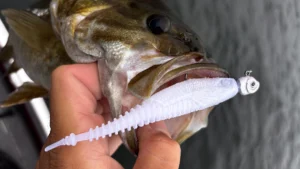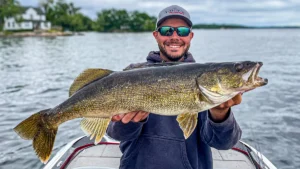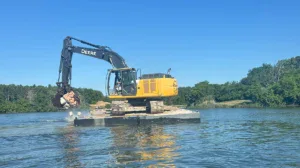Being able to cover water while bass fishing is critical throughout the year. The fish are often in several different stages on any given fishery, in the spring and fall especially. This means you can catch them several different ways but can also mean the fish are few and far between at times. If the bites are pretty spread out, having a bait you can quickly and effectively cover water with is an essential part of any game plan.
Today, we’re going to look at a few different baits that are great for this purpose and hopefully find an offering for almost every type of cover, water clarity and season.

Buzzbait
One of the best baits ever for covering water, the trusty buzzbait is a perfect depiction of what you’re looking for here. It’s a bait that’s continuously on the move, it can be fished in open water as well as through all sorts of cover and its buzzing blade creates enough noise and flash to draw a fish in from a pretty good distance away.
Some might wonder why the new-age Whopper Plopper-style baits don’t take the place of a buzzbait on this list. While this type of lure is an awesome search bait as well in certain situations, the buzzbait is far more weedless and thus more versatile, able to be fished in a wider variety of cover.
Throwing a buzzbait will help you process a lot of water fairly quickly any time of the year the the water is above 55 degrees or so. Once the water gets into the 50s, the bite will slow down on the buzzbait substantially. This is when it’s a good time to go with our next search bait.

Spinnerbait
Spinnerbaits work well year round for covering water but they’re definitely better than the buzzbaits once the water gets cold. You can fish a spinnerbait faster other times of the year, even burning it just below the surface in the summer and early fall. But as the water cools, your retrieve should slow down a bit.
Still, it’s one of the best baits for covering water even in the cold, because you can again fish this bait on a near constant retrieve. Giving it a little pump and pause here and there is a good idea. But because a spinnerbait is basically on the move all the time, you can cover water while the thump and flash of the blades draw bass in, again similar to the sound of the buzzbait’s prop.
You should be starting to see a trend develop among the baits that are good for covering water. They’re constantly on the move and they offer some sort of flash, sound or vibration to draw the bass in. The same is true for our next bait as well.

Lipless crankbait
The lipless crankbait is another classic lure for covering water. This bait excels in its versatility. Where a buzzbait works only along the surface and a spinnerbait strays a few feet deeper into the water column, a lipless crankbait really starts to reach down into the water, while also still being a great bait to fish shallow and near the surface.
Being able to effectively cover water both laterally as well as vertically makes the lipless rather special; it opens up so much of the water column. With this one bait, you can quickly dissect a 2-foot deep mud flat, rip through submerged vegetation in 7 to 10 feet of water or yo-yo a lure 20 feet deep around a ball of bait.
Because it can be fished at various depths and comes in all the colors of the rainbow and then some, a lipless crankbait gives you something to cover water with for every season, in every water color and around a multitude of different forage.

Best of the rest
There are a lot of other baits you can cover water fairly well with too, given certain situations; we already mentioned the Whopper Plopper in sparse cover and open water. A vibrating jig is another great one and can be interchanged with the spinnerbait at times. You can cover a lot of ground with a swim jig as well, especially in and around vegetation. Both toads and swimbaits work well in those situations, too.
Then when you get out into the open water, single swimbaits on jigheads, underspins and jerkbaits can all be used to break water down relatively well. These lures lack the speed and some of the drawing power of the first three baits we mentioned but there are times, especially in super cold and clear water, when these lures can still draw fish in from pretty good distances. This is when the louder and more aggressive baits are often ineffective on the lethargic and wary bass anyway. So these subtler baits are basically the best options you’ve got to cover water.

Final thoughts
In order to be effective and efficient with your time on the water, you almost have to have a good bait on deck to cover water with. Tailoring your selection to the conditions you’re fishing will give you a solid option for those stretches between bites.
It’s typically pretty easy to distinguish where to slow down and where to roll on. Say you’re fishing down a bluff wall for instance with the occasional patch of water willow grass; slowing down to swim a jig through the water willow and then picking up a buzzbait or a plopper on the bare bluff is a good idea.
Or say you’re fishing long stretches of water willow and every time you come to a piece of wood in the water willow you get a bite. Pick up a toad and cruise along, then when you see a piece of wood coming up, pick up a swim jig or light Texas rig that the fish is less likely to miss. Then pickup the toad and go again.
Covering water this way will limit the amount of time you waste in less productive water, while also giving you a chance to pick up a fish or two or get clued into something even on those more barren stretches.














